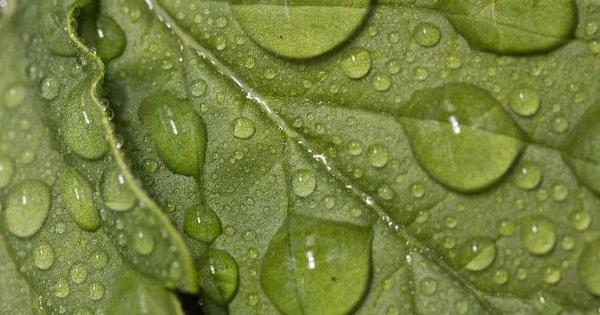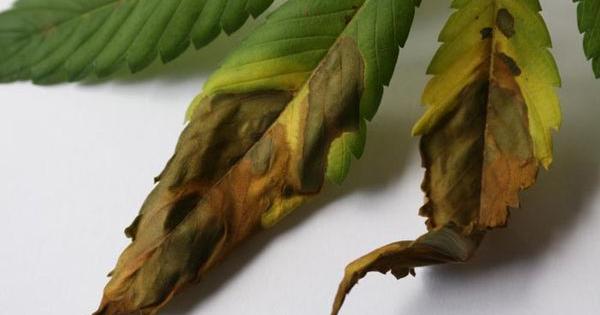- Many research studies have confirmed the benefits of adding silica to the feeding regime of your cannabis crop.
- Silica reduces the threat of pests and disease, creates plants with stronger cell structures, improves nutrient absorption, protects against metal toxicities, and ultimately improves overall crop performance.
- Research indicates that silica must be used during the plant’s entire life cycle, from the seedling or clone stage until harvest time.

You have probably heard the word 'silica' millions of times, but chances are you do not know what it refers to. According to the dictionary, silica is "a hard, unreactive, colourless compound which occurs as the mineral quartz, and as the major constituent of sand and other rocks." Silica is the primary component of glass; it is also found in sand; and it is one of the most common minerals in the earth's crust. In fact, according to Britannica.com, "the mass of Earth's crust is 59% silica, and silica is the main constituent of more than 95% of the known rocks." When silicon comes into contact with oxygen, silica is formed. So silica is the common term for silicon dioxide.
Therefore, silica is abundant in many soils and is a major component of plant tissue, sometimes in even higher concentrations than nitrogen and potassium, which are two of the three primary macronutrients required for life. So even though silica is vital to plant health, it is not classified as one of the essential nutrients for cannabis, which can lead some growers to believe it is not necessary in regular feeding regimes. Here is why this is untrue:
How can plants benefit from silica intake?
Stronger cell walls
Silica reinforces the plant cells from the inside out, strengthening the cell walls that help the plant build thicker stems to be able to bear the weight of the buds. The thicker cell walls produce bigger stems and branches that can absorb and transport water and nutrients more efficiently, resulting in faster and more extensive growth.
Higher resistance to environmental stress
Since plants lack an immune system, silica can perform many of the same functions and can be considered a super vitamin for them. For instance, the addition of silica to the plants' diet helps them withstand extreme temperatures, whether hot or cold. This is especially useful for outdoor growers whose crops experience peak temperatures at midday and the lowest temperatures at night.
Silica forms a protective layer on an intracellular level that decreases the amount of water loss through transpiration, making plants less likely to suffer during drought conditions; and it reduces the amount of shock they experience in extreme circumstances.
Increased resistance to pathogens
When a plant is fed a soluble form of silica, the plant accumulates it around the infected spot, forming selectively fortified areas that can defend themselves against fungal infections such as mildew or powdery mildew. As a resistance measure, the plant uses silica to build up an additional mineral barrier, making it more difficult for diseases and pathogens to get inside the plant.

Higher resistance to pests
Some botany studies have proven that silica in the soil defends plants from being eaten by herbivores. Silica also accumulates in the epidermal cell walls of leaves, making it harder for insects to bite and suck them. Foliar feeding is the best way to ensure that silica is absorbed directly by the leaves, where it can be used immediately to combat pests.
Improved nutrient absorption
Besides helping prevent disease and combat pests, silica can also help plants grow more efficiently, as it plays an instrumental role in the absorption of nutrients such as magnesium, nitrogen, and potassium, even when in growing conditions that are far from ideal.
It can protect plants from heavy metal toxicities
In the presence of heavy metals, plants can get stressed, and this can lead to lower overall performance and quality. And as these metals are also toxic for humans, it is a concern for users too. The journal Ecotoxicology and Environmental Safety published a study in 2015 which concluded that silica alleviates heavy metal toxicity in soils, and reduces the bioavailability of these metals in plant absorption.
It enhances metabolic functions
It has been proven that plants grown with the use of soluble silica have higher concentrations of chlorophyll in their leaf tissue in comparison with plants grown without it. Silica also enables them to make more efficient use of carbon dioxide (CO2), which results in a lush, green foliage with excellent leaf structure. Plants look healthier and prettier, and let's face it, who would say no to better-looking plants, right?

How is silica used?
For best results, silica needs to be present in the nutrient solution throughout the entire life cycle of the plant. Plants grown in soil have a better chance of absorbing small quantities of silica that may be available in the soil, whereas plants grown hydroponically do not have a direct source of silica unless this is added as a supplement.
It is a good idea to follow the dosage rates of the particular product being used, but as a general rule, when plants are very young, introduce silica at approximately 20 to 30% of the general feeding rate and increase the application gradually as the plants grow in size and enter the flowering phase.
Since there are so many silica brands in the horticulture industry, it can prove difficult to decide on one. It is advised to choose one with a high silicon dioxide concentration. Some brands only offer products with 3% or less concentration of silica, so look for other brands containing at least 7 to 8% silicon dioxide.
Remember that silica is naturally alkaline and will therefore increase the pH level of the nutrient solution. Silica requires a pH greater than 7 to remain soluble. It is due to this that it cannot be mixed with other nutrients and must be added separately, once all the other nutrients have already been dissolved.
----
References:
Silica in Plants: Biological, Biochemical and Chemical Studies. Heather A. Currie, Carole C. Perry. Annals of Botany 2007.
Effect of root and foliar applications of soluble silicon on powdery mildew control and growth of wheat plants. M.-H. Guével, James G. Menzies, Richard R Bélanger. European Journal of Plant Pathology 2007.
A Novel Mechanism by which Silica Defends Grasses Against Herbivory. J. W. Hunt, A. P. Dean, R. E. Webster, G. N. Johnson, A. R. Ennos. Annals of Botany 2008.
Effect of silicon on plant growth and crop yield. G.H.Korndörfer, I.Lepsch. Studies in Plant Science 2001.






Comments from our readers
There are no comments yet. Would you like to be the first?
Leave a comment!Did you like this post?
Your opinion about our seeds is very important to us and can help other users a lot (your email address won't be made public).